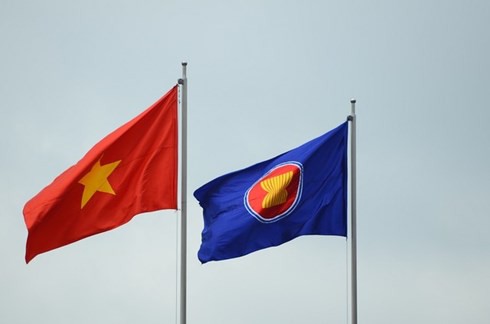In the context that the COVID-19 epidemic continues to be complicated in many major export market areas of Vietnam such as Europe and the U.S, promoting the exploitation of neighbouring markets, especially ASEAN, is considered a solution for businesses to maintain the export turnover.

This is a comment of experts at the ASEAN National Market Conference and boosting Vietnam's exports of goods to ASEAN by the Center for Integration and Support of Ho Chi Minh City in collaboration with the Department of Asia - Africa Market, Ministry of Industry and Trade has just taken place.
Mr. Nguyen Phuc Nam, Deputy Director of Asia-Africa Market Department, Ministry of Industry and Trade said that Vietnamese goods still have a lot of development space in ASEAN.
Currently, Indonesia, Thailand and Philippines are the three largest import markets of Vietnamese goods with a variety of products. In particular, dried fruits and textile products for tourists in Vietnam are interested by many Thai buyers and distributors. Meanwhile, Indonesia and Philippines needs to import many generators, water pumps, electric power, telecommunication equipment from Vietnam.
According to Nguyen Phuc Nam, ASEAN is a major rice export market of Vietnam, in 2019, ASEAN rice exports reached US $ 1 billion, of which the Philippines is the largest rice importer of Vietnam. This area is forecasted to continue to increase due to the impact of COVID -19 epidemic.
In addition, seafood, coffee and vegetables also have potentials to expand the market. Pangasius has export advantages in Thailand and Singapore, the group of coffee, tea and spices are accounting for a large proportion in Indonesia, while the growth rate of Vietnam's exports of vegetables and fruits to the ASEAN bloc has recorded a significant increase.

However, Mr. Pham Ngoc Hung, Vice Chairman of HCMC Business Association informed that the COVID -19 epidemic caused the export turnover to ASEAN markets in the first half of 2020 to be decreased by 13.4%.
In addition, the export to ASEAN recently also faces many difficulties stemming from subjective conditions. Specifically, intra-regional exporters are mostly small and medium-sized enterprises, production technology is outdated, mainly suitable for markets such as Laos, Cambodia and Myanmar.
In high-standard markets such as Thailand, Singapore, Vietnamese goods face severe competition with Chinese goods and high-tech goods from Japan, South Korea, India, etc. On the other hand, Vietnamese businesses have not focused on intra-ASEAN export despite the preferential tariffs and geographical advantages. Most of internal exports are from FDI enterprises, which have valuable products such as phones, computers, electronic products and components.
In order to effectively exploit the ASEAN market, experts believe that businesses need to restructure commodity categories to suit the new situation, and improve product quality with advanced technology. Besides, businesses need to apply digital technology to management, market access as well as transactions with customers.
Ms. Le Thi Mai Anh, Head of Southeast Asia, South Asia and Regional Cooperation Department, Asia-Africa Market Department, Ministry of Industry and Trade shared that ASEAN is a common economic community but there are differences in identity, ethnicity, religion, and consumption habits in each country. Therefore, businesses need to actively study and research needs as well as specific requirements of each market to have an effective approach. For example, if a food business wants to penetrate the markets of Islamic countries in the region, it must first get Halal certification.
Meanwhile, Mr. Truong Xuan Trung, Head of Vietnam Trade Office in Indonesia, suggested that export enterprises could build a distribution network through a local agent, so that it would be easier for consumers to access and would have cost savings rather than opening a branch.
In some markets, the level of difficulty and risk of customs clearance is quite high, so businesses need to contact closely with support units such as the Vietnamese Trade Office in the local country, advisory centers, import and export supporting agencies to update policies, procedures and market information on a regular basis, thereby increasing export efficiency.
Source: TCCT.